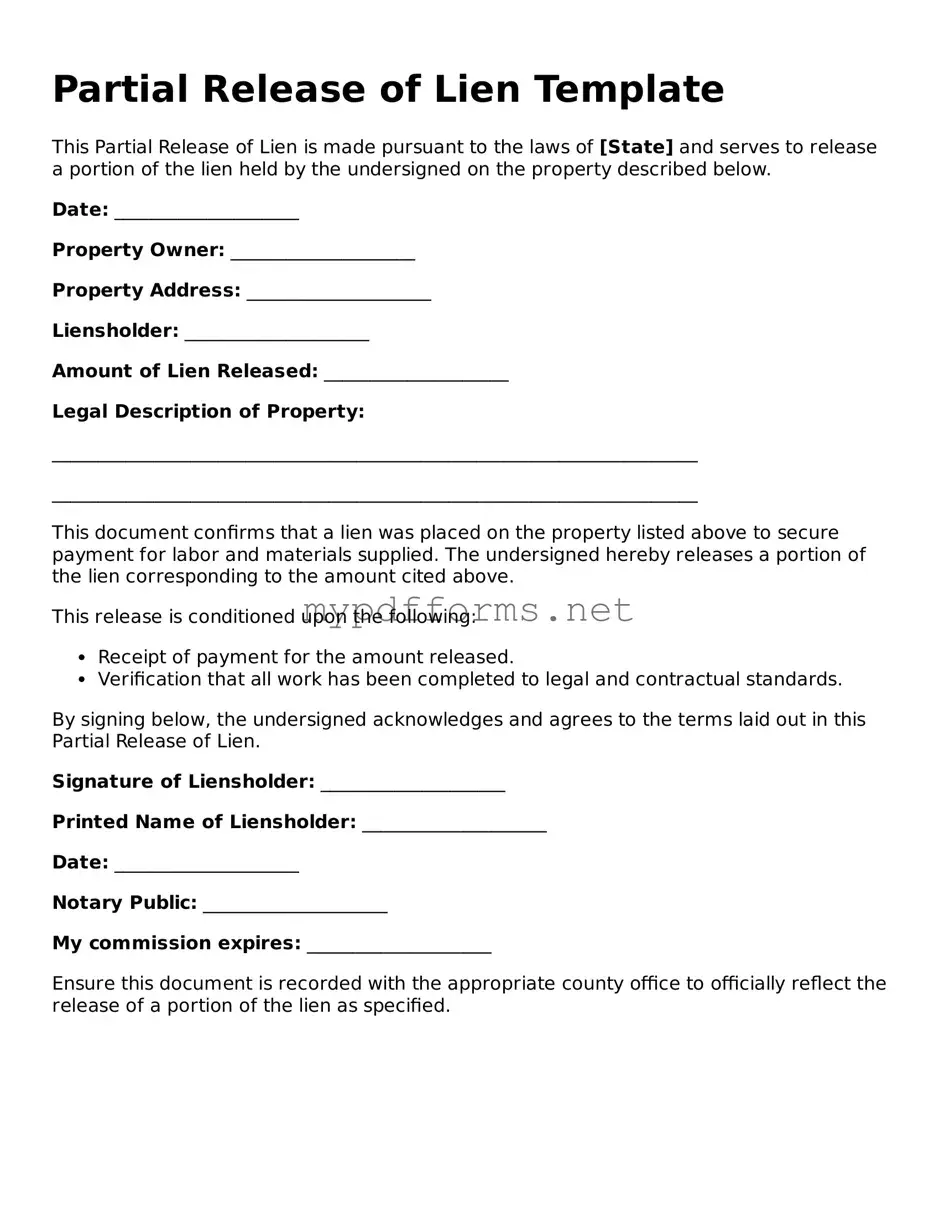The Partial Release of Lien form shares similarities with the Satisfaction of Mortgage document. Both documents serve to confirm that a debt obligation has been fulfilled, either in part or in full. In the case of a Satisfaction of Mortgage, the lender formally acknowledges that a borrower has paid off their mortgage, thus releasing the property from the encumbrance. Similarly, a Partial Release of Lien allows a property owner to remove a lien from a specific portion of their property, indicating that a debt associated with that portion has been settled. Both documents aim to provide clarity and assurance regarding the status of property rights.
Another document that resembles the Partial Release of Lien is the Subordination Agreement. This agreement is often used in real estate transactions to prioritize one lien over another. When a lender agrees to subordinate their lien, they effectively acknowledge that a subsequent lien will take precedence. This is akin to a Partial Release of Lien, where a specific portion of the lien is released, allowing for a clearer hierarchy of claims on the property. Both documents facilitate smoother transactions by clarifying the rights and responsibilities of parties involved in property financing.
The Assignment of Mortgage also bears resemblance to the Partial Release of Lien. In an Assignment of Mortgage, the lender transfers their interest in the mortgage to another party, which can affect the rights associated with the property. This document, like the Partial Release of Lien, modifies the original lien's status. While the Partial Release indicates that part of the lien is no longer enforceable, an Assignment of Mortgage transfers the entire mortgage obligation. Both documents highlight the dynamic nature of property rights and financial obligations in real estate transactions.
The Release of Judgment Lien is another document that parallels the Partial Release of Lien. A judgment lien is created when a court grants a creditor the right to take possession of a debtor's property if a debt is not paid. When a creditor releases this lien, it signifies that the debt has been satisfied or settled. This is similar to the Partial Release of Lien, where a specific portion of a lien is released. Both documents serve to clear the title of encumbrances, thereby enhancing the property owner’s ability to sell or refinance their property without legal complications.
The careful management of property documents is essential for preserving rights, and to avoid any ambiguities related to delivery, you might want to see the document concerning the FedEx Release Form, which illustrates how authorizing package deliveries can protect your interests even when you are not present.
Lastly, the Deed of Trust shares characteristics with the Partial Release of Lien. A Deed of Trust is a legal document that secures a loan with real property. In certain situations, a Partial Release of Lien can be issued in conjunction with a Deed of Trust to release a portion of the property from the security interest, particularly when the borrower has made a significant payment. Both documents are instrumental in managing the relationship between borrowers and lenders, ensuring that obligations are clearly defined and that property rights are respected.
